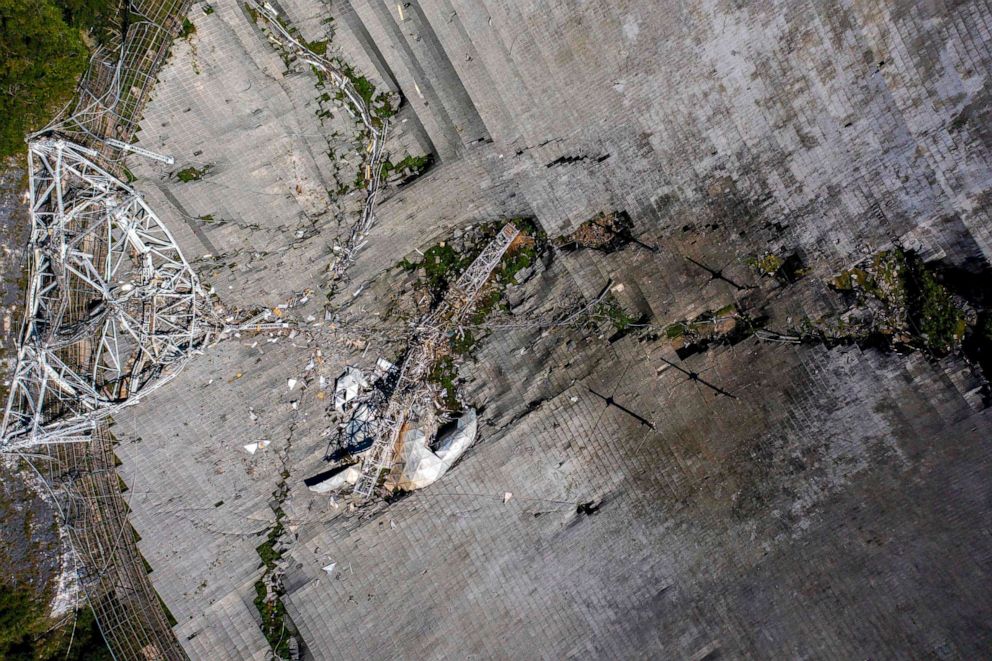Iconic Arecibo telescope in Puerto Rico collapses before plans to demolish
The famous Arecibo Observatory had been in service for 57 years.
Scientists, students and Puerto Ricans are among those mourning the collapse of the iconic radio telescope in Arecibo, Puerto Rico.
The telescope collapsed Tuesday morning after showing signs of extreme weakness. The radio-telescope had already suffered major damages after a cable that helped support the 900-ton platform hanging at 450 feet above the dish broke in August. Weeks later, a second cable gave in, putting the telescope at greater risk.
Initial findings show that the top of all three support towers holding the platform ripped, dropping the instrument to the 1,000-foot-wide reflector dish, according to the National Science Foundation.
The NSF said no injuries were reported. The observatory's learning center reported significant damage amid the collapse of the radio-telescope, the agency said in a news release.
Plans to demolish and decommission the radio-telescope due to a possible risk of collapse were already announced by NSF on Nov. 19.

According to the observatory's director, Francisco Córdova, a structural analysis is being done on the reflector and some other buildings at the observatory to check for further damage. Atmospheric engineer companies are standing by to start working with any potential climate impact due to the collapse.
Even though Córdova said NSF "did the best that they could with what they have," he added that there were some options at a point when the structure wasn't so unstable.
"There were a series of options that could've been put in place at a certain time if the decision would have been taken relatively fast," the observatory director said during a press conference.
"We will keep looking for ways to reestablish a similar capacities or create superior capacities," Córdova added.
Some took to social media sharing messages of what the observatory meant to them.

"What I will miss the most is the joy that we found at the Observatory. The sheer joy of sharing astronomical discovery with people from all walks of life, something we could do at Arecibo only because of where it was," one Twitter user posted.
"Arecibo Observatory touched the lives of so many people," the Planetary Society tweeted.
After the NSF's announcement last month, supporters started a petition requesting action to stabilize the telescope. As of Tuesday morning, there were over 50,000 signatures.

The famous Arecibo Observatory had been in service for 57 years and was responsible for tracking asteroids and made some groundbreaking discoveries.
For many scientists, the radio-telescope was a key instrument in astronomy and a place of pride.
"It represents half of my professional life. It was my home," Jonathan S. Friedman, a senior research associate at the Arecibo Observatory, said in an interview with WAPA-TV Tuesday.
During the interview Friedman said he heard an intense rumbling noise around 7:50 a.m. local time that lasted some seconds. Friedman said he took a picture showing the broken towers that were holding the platform.




